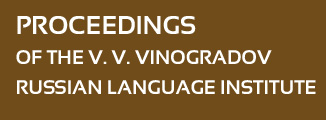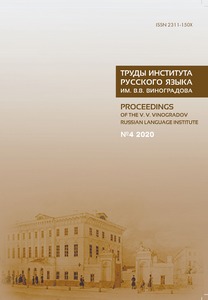NOMINATIVE–ACCUSATIVE PLURAL IN -À: LIMITATIONS AND MORPHOLOGICAL FUNCTION IN THE DECLENSION SYSTEM
Abstract:
In scholarly descriptions of the N–A plural forms in -á (лесá, берегá) many factors that are not directly related to morphology are mentioned, but the actual morphological functions of inflection in the declensional system are not formulated.
By clarifying the limitations of morphological forms in -á, the author concludes that the main factor regulating the distribution of the inflectional ending -á is the transfer of stress from the stem in the singular to the ending in the plural. For all multisyllabic stemmed nouns of accentual paradigm C, regardless of the origin of the stem, the bisyl labic or multisyllabic nature of the stem and the place of stress on the stem in the singular, the inflectional ending -á has no alternative. The association of the inflectional ending -á with the masculine gender is derived from accentuation. Nouns with a monosyllabic stem that fall within accentual paradigm C constitute a special phenomenon: the alternative to the inflectional ending -á, the stressed inflectional ending -ы with mobile stress (миры, домá), exists only in this subgroup.
Morphologically, the inflectional ending of the N–A plural -á is characterized in this article as one of the elements indicating plurality, and an additional means of expressing number oppositions. It accompanies more general and more regular morphological processes: the infl ectional unification of case forms and case oppositions in marked numerical value — the meaning of the plural; the complexity of the morphemic structure of plural paradigms as a result of the formation of an index of multiplicity in substantive and adjectival paradigms and the accentual opposition of number paradigms.


